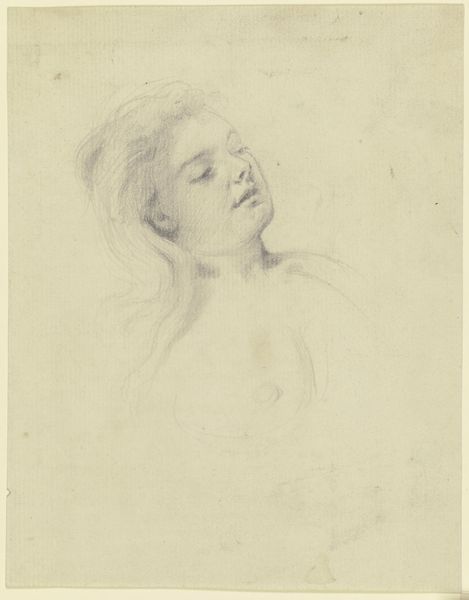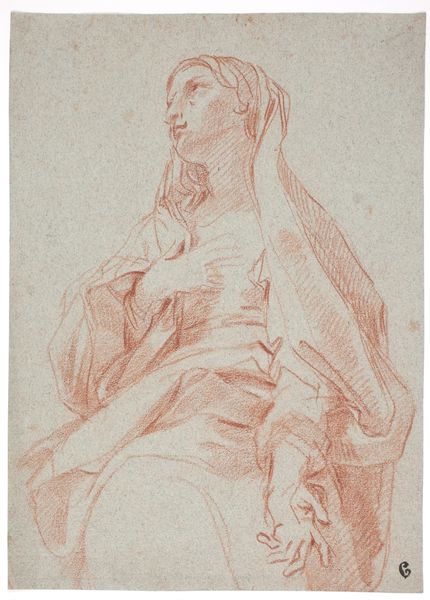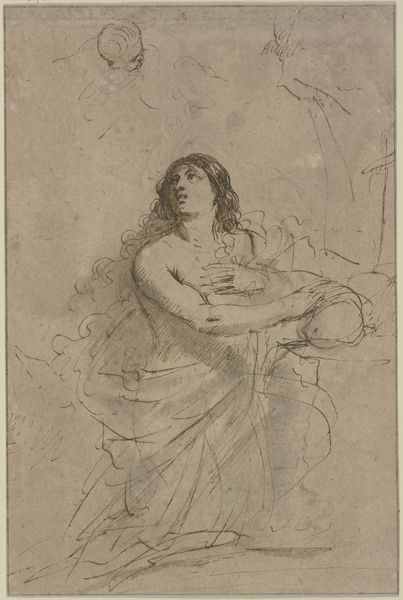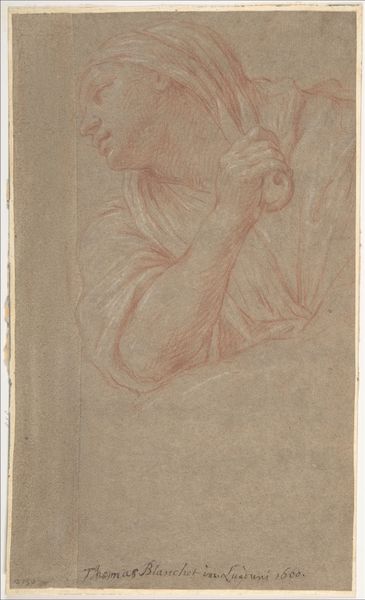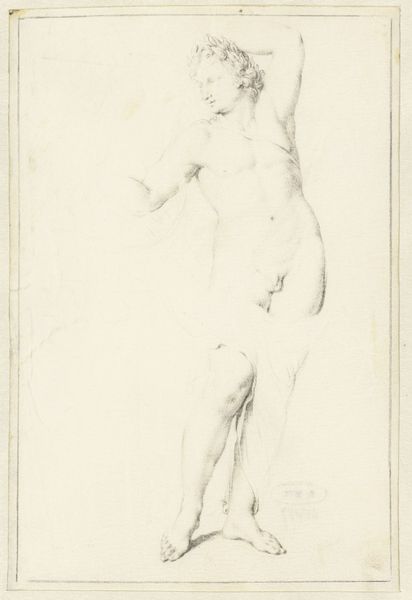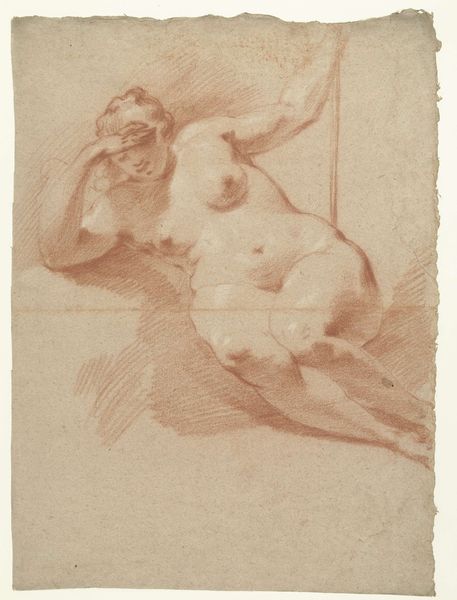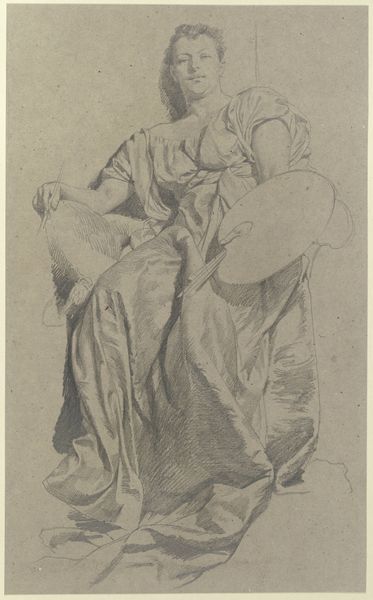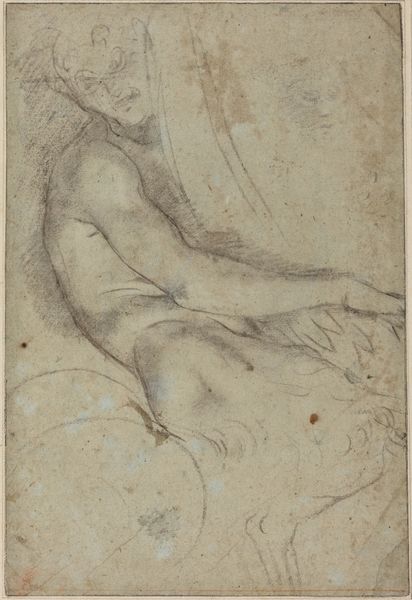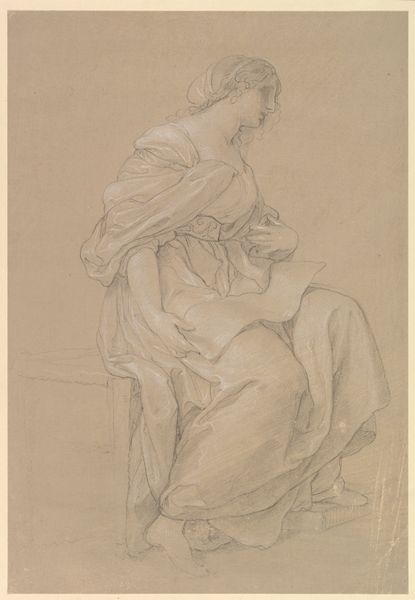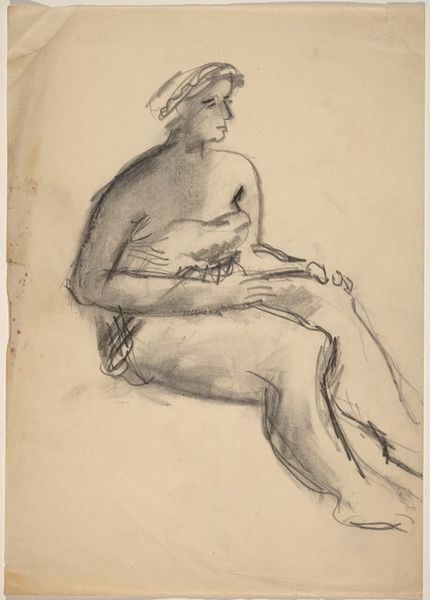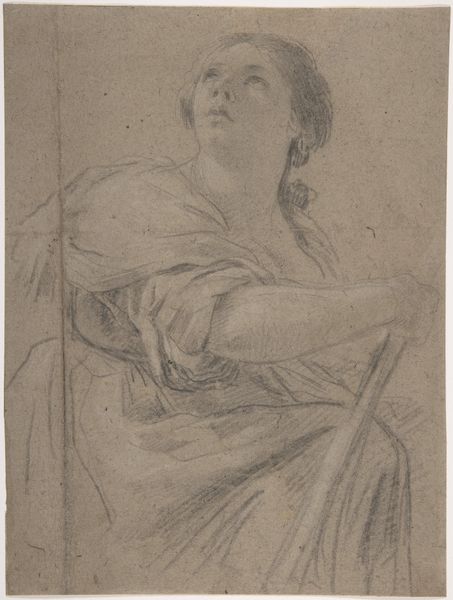
drawing, dry-media, charcoal
#
portrait
#
drawing
#
baroque
#
charcoal drawing
#
dry-media
#
pencil drawing
#
charcoal
#
nude
Dimensions: height 620 mm, width 450 mm
Copyright: Rijks Museum: Open Domain
Editor: So, this is Augustinus Terwesten's "Seated Female Nude," dating sometime between 1659 and 1711. It’s a charcoal drawing, and something about the pose, it's both relaxed and kind of monumental. How do you interpret this work within its historical context? Curator: It’s a powerful question. This piece sits within the Baroque era, a time when the female nude was both celebrated and highly contested. How do you see this work engaging with ideas of femininity, representation and power at the time? Think about the artist, Terwesten, depicting a "seated" nude as opposed to reclining; the subject engages more directly with the viewer. What social narratives do you think Terwesten may be subtly addressing? Editor: I see what you mean about engaging. I guess it shifts the dynamic, but I’m still wrestling with what that says about how women were seen then. Curator: Exactly! Was it a reclamation, or simply repeating power structures by an artist? What nuances emerge from a study of power and visibility when considering gender roles within the art world of the time? Also, considering how 'idealised' the female form was represented across painting, sculpture and drawing at the time, how can we reflect upon the lack of this within this work. Do we take from this that there was intent by Terwesten for a change? Or that a more idealised work would have garnered more publicity during his time. Editor: It definitely gives me a lot to consider about challenging perspectives. Curator: It's this tension, isn't it? Recognizing the cultural norms, and then looking critically at how artists like Terwesten engaged, perpetuated, or even resisted those norms in subtle but significant ways through a single drawing of a seated female. It highlights the important ways artists used "the gaze", as well as what the audience had in relation. How did people at the time view "femininity", or perhaps in opposition; "masculinity", to Terwesten, or even the sitter? How do we draw from such considerations, and contrast to contemporary narratives? This, in turn, may affect an individuals interpretations or ideas. Editor: Wow, I've never considered the nuances behind a nude like that before. It adds so much to the picture!
Comments
No comments
Be the first to comment and join the conversation on the ultimate creative platform.
